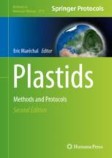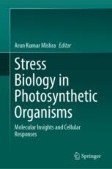Search
Search Results
-
Algae from Secondary Endosymbiosis
The photosynthetic world is not only dominated by the green color of trees and plants.
-
Coral–algal endosymbiosis characterized using RNAi and single-cell RNA-seq
Corals form an endosymbiotic relationship with the dinoflagellate algae Symbiodiniaceae, but ocean warming can trigger algal loss, coral bleaching...

-
Evaluation of natural endosymbiosis for progress towards artificial endosymbiosis
Endosymbiosis or symbiogenesis is a process where a cell hosts another cell that is acquired through phagocytosis or natural entry of the cell within...

-
Peculiar Endosymbiosis in the Cyanobiont Nostoc azollae 0708: An In Silico Approach
Nostoc azollae 0708 exhibits peculiar endosymbiosis owing to the unique commitment of cyanobiont’s association with fern throughout its life cycle....
-
A legume kinesin controls vacuole morphogenesis for rhizobia endosymbiosis
Symbioses between legumes and rhizobia require establishment of the plant-derived symbiosome membrane, which surrounds the rhizobia and accommodates...

-
Complex Endosymbiosis II: The Nonphotosynthetic Plastid of Apicomplexa Parasites (The Apicoplast) and Its Integrated Metabolism
Chloroplasts are essential organelles that are responsible for photosynthesis in a wide range of organisms that have colonized all biotopes on Earth...
-
Complex Endosymbioses I: From Primary to Complex Plastids, Serial Endosymbiotic Events
A considerable part of the diversity of eukaryotic phototrophs consists of algae with plastids that evolved from endosymbioses between two...
-
Endosymbioses: Origin and Diversity of Photosynthetic Eukaryotes and Their General Genetic Exchange Modes
It was through endosymbiosis that an archaeal host incorporated a free-living proteobacterium.
-
Determining the Subcellular Localization of Proteins in the Different Membranes of Diatom Secondary Plastid
Diatoms such as Phaeodactylum tricornutum arose through a process termed secondary endosymbiosis, in which red alga–derived plastids are surrounded...
-
Endosymbiosis before eukaryotes: mitochondrial establishment in protoeukaryotes
Endosymbiosis and organellogenesis are virtually unknown among prokaryotes. The single presumed example is the endosymbiogenetic origin of...

-
Division of labour in a matrix, rather than phagocytosis or endosymbiosis, as a route for the origin of eukaryotic cells
AbstractTwo apparently irreconcilable models dominate research into the origin of eukaryotes. In one model, amitochondrial proto-eukaryotes emerged...

-
How Did Thylakoids Emerge in Cyanobacteria, and How Were the Primary Chloroplast and Chromatophore Acquired?
The emergence of thylakoid membranes in cyanobacteria is a key event in the evolution of all oxygenic photosynthetic cells, from prokaryotes to...
-
Role of Bacterial Secondary Metabolites in Modulating Nitrogen -Fixation in Non-legume Plants
NitrogenNitrogen is one of the essential elements which plays a key role in plant growth and development. Beneficial microorganisms are eco-friendly...
-
The virome of the last eukaryotic common ancestor and eukaryogenesis
All extant eukaryotes descend from the last eukaryotic common ancestor (LECA), which is thought to have featured complex cellular organization. To...

-
Carbohydrate Metabolism
Diatoms are unicellular algae that perform photosynthesis, a process that comprises both the electron transport processes in the thylakoid membranes...
-
Symbiont-conferred immunity interacts with effects of parasitoid genotype and intraguild predation to affect aphid immunity in a clone-specific fashion
BackgroundHost-parasite interactions represent complex co-evolving systems in which genetic and associated phenotypic variation within a species can...

-
Photosynthetic Organisms: Their Existence in Evolutionary Prospective
Photosynthesis is a very old process on this Earth. Based on fossil discoveries and chemical evidence, cyanobacteria first appeared 2.5–2.6 billion...
-
Endosymbiotic Origin of Chloroplasts in Plant Cells’ Evolution
AbstractThe theory of endosymbiotic origin of chloroplasts has become basal in present-day biology. In this regard, the emergence of eukaryotic...

-
Expression and Purification of the Type I Metacaspase from a Cryptophyte Guillardia theta , GtMCA-I
Type I metacaspases are the most ubiquitous of the three metacaspase types and are present in representatives of prokaryotes, unicellular eukaryotes...
-
The genus Sodalis as a resource for understanding the multifaceted evolution of bacterial symbiosis in insects
Insects can establish a variety of symbiotic associations with bacteria that can have a significant impact on their evolutionary ecology. Some...

